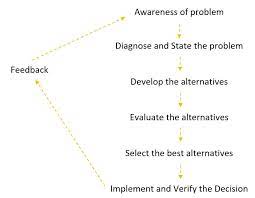Structured Decisions: A Key to Effective Decision Making
Structured decisions play a crucial role in the process of effective decision making. When faced with complex choices, having a structured approach can help individuals and organizations make informed and rational decisions.
Structured decisions involve breaking down the decision-making process into smaller, manageable steps. By following a systematic approach, individuals can analyze the situation, gather relevant information, evaluate alternatives, and ultimately make a well-informed choice.
One of the key benefits of structured decisions is that they provide clarity and organization to the decision-making process. By defining clear objectives, criteria, and alternatives, individuals can avoid confusion and ensure that all relevant factors are taken into account.
Furthermore, structured decisions help minimize biases and emotions that may influence decision making. By following a predetermined framework, individuals can make more objective decisions based on facts and data rather than subjective opinions.
In addition, structured decisions promote consistency and repeatability in decision making. By establishing a standardized process for making choices, individuals can ensure that similar decisions are approached in a consistent manner, leading to more predictable outcomes.
Overall, incorporating structured decisions into the decision-making process can lead to more effective and efficient outcomes. Whether in personal or professional settings, having a structured approach can help individuals navigate complex choices with confidence and clarity.
7 Essential Tips for Making Structured Decisions Effectively
- Clearly define the decision to be made
- Gather all relevant information and data
- Identify criteria for evaluating options
- Generate multiple feasible alternatives
- Evaluate each alternative against the criteria
- Make a decision based on analysis rather than emotions
- Implement the chosen decision and monitor its outcomes
Clearly define the decision to be made
When utilizing structured decisions, it is essential to begin by clearly defining the decision that needs to be made. By articulating the specific problem or choice at hand, individuals can focus their efforts on gathering relevant information, evaluating alternatives, and ultimately making a well-informed decision. A clear definition of the decision helps establish the scope and objectives, guiding individuals through a systematic process that leads to more effective and rational outcomes.
Gather all relevant information and data
When implementing structured decisions, a crucial tip is to gather all relevant information and data. By ensuring that you have access to comprehensive and accurate information, you can make well-informed decisions based on facts rather than assumptions. Gathering relevant data allows you to analyze the situation thoroughly, identify key variables, and evaluate different alternatives effectively. This step is essential in the decision-making process as it provides a solid foundation for making sound and rational choices that align with your objectives and criteria.
Identify criteria for evaluating options
When making structured decisions, it is essential to identify criteria for evaluating options. By clearly defining the criteria that will be used to assess each alternative, individuals can ensure that their decision-making process is objective and systematic. This step helps in comparing different options based on relevant factors, such as cost, feasibility, impact, and alignment with goals. Identifying criteria for evaluating options enables individuals to make well-informed decisions that align with their objectives and priorities.
Generate multiple feasible alternatives
When practicing structured decision-making, it is essential to generate multiple feasible alternatives. By exploring a range of potential options, individuals can broaden their perspective and consider diverse solutions to the problem at hand. Generating multiple alternatives allows for a more comprehensive evaluation process, enabling decision-makers to weigh the pros and cons of each option before making a final choice. This approach not only enhances creativity and innovation but also increases the likelihood of identifying the most effective solution that aligns with the desired outcomes.
Evaluate each alternative against the criteria
When utilizing structured decisions, it is essential to evaluate each alternative against the predefined criteria. By carefully assessing how well each option aligns with the established criteria, individuals can make a more informed and objective choice. This step allows for a thorough comparison of alternatives based on their merits and drawbacks, ultimately leading to a decision that best meets the desired objectives. Evaluating alternatives against criteria ensures that decisions are made in a systematic and rational manner, enhancing the likelihood of achieving successful outcomes.
Make a decision based on analysis rather than emotions
When it comes to structured decisions, a crucial tip to keep in mind is to make choices based on analysis rather than emotions. By prioritizing rational evaluation and factual information over subjective feelings, individuals can ensure that their decisions are grounded in logic and reason. This approach helps minimize the impact of biases and impulsive reactions, leading to more objective and well-informed choices. Emphasizing analysis over emotions in decision making can result in outcomes that are more aligned with long-term goals and objectives, ultimately contributing to better overall decision-making processes.
Implement the chosen decision and monitor its outcomes
Implementing the chosen decision and monitoring its outcomes is a critical step in the structured decision-making process. By putting the decision into action and closely monitoring its effects, individuals and organizations can assess the success of their choice and make any necessary adjustments. This proactive approach allows for real-time feedback on the decision’s impact, enabling continuous improvement and ensuring that future decisions are based on practical insights gained from monitoring outcomes.




